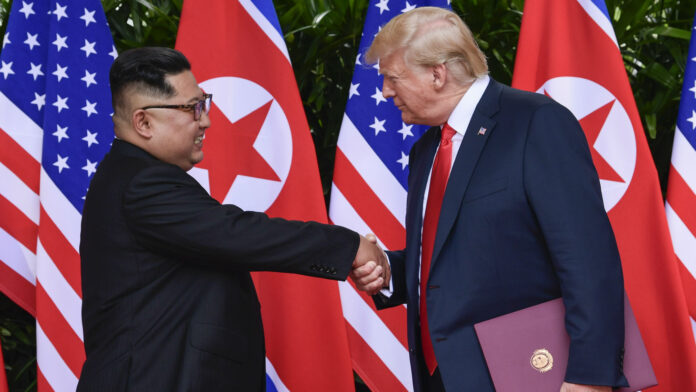The geopolitical landscape shifted dramatically this week as US President Donald Trump reignited hopes— and controversies— around ending the war in Ukraine. In a flurry of phone calls, public statements, and leaked plans, Trump positioned himself as a mediator between Kyiv and Moscow, claiming both Ukrainian President Volodymyr Zelensky and Russian President Vladimir Putin are ready to negotiate. Yet, as the Munich Security Conference unfolds, skepticism abounds over whether this push for peace will yield tangible results or deepen existing fractures in transatlantic alliances .
On February 13, Trump announced he had held “lengthy and productive” calls with both Zelensky and Putin, declaring that the leaders shared his desire for peace. He revealed plans for a high-stakes meeting in Munich involving US Vice President JD Vance and Secretary of State Marco Rubio, though Kyiv later denied reports of a three-way negotiation involving Russian representatives . Trump’s optimism was echoed by the Kremlin, which confirmed the 90-minute call with Putin and emphasized a mutual commitment to diplomacy .
As the world watches the developments in Munich, one thing is clear: the path to ending the Ukraine conflict will require not only diplomatic finesse but also a delicate balancing act between competing interests and deeply entrenched grievances. Whether Trump’s efforts will yield lasting peace or merely a temporary reprieve remains to be seen
However, Trump’s approach starkly contrasts with the Biden Administration’s strategy. While Biden prioritized military aid and isolating Russia, Trump has criticized Western “dependency” on US support, urging Europe to shoulder more defense responsibilities. US Defense Secretary Pete Hegseth underscored this shift, stating that NATO membership for Ukraine is “unrealistic” and that Europe must lead its own security . These remarks, delivered at NATO headquarters, signaled a departure from Biden’s policies and alarmed Kyiv, which views NATO accession as a cornerstone of its post-war security .
Zelensky’s apparent openness to talks marks a seismic shift from his 2022 decree banning negotiations with Putin after Russia annexed four Ukrainian regions. Yet, battlefield stagnation and dwindling Western aid have forced Kyiv to recalibrate. In a recent interview, Zelensky hinted at flexibility, stating he would meet Putin “if it brings peace” .
This pragmatism, however, collides with domestic and geopolitical realities. Putin has repeatedly questioned Zelensky’s legitimacy, arguing his presidential term expired in May 2024 under Ukrainian law. The Kremlin insists any agreement signed by Zelensky would lack legal weight, a stance complicating negotiations . Meanwhile, leaked US peace proposals— reportedly involving territorial concessions and Ukrainian neutrality— have fueled fears in Kyiv that Trump might sacrifice Ukrainian sovereignty for a quick deal. One plan, leaked by a Ukrainian outlet “strana.today”, suggests freezing the conflict along current frontlines, withdrawing Ukrainian troops from Kursk, and recognizing Russian-occupied territories— a nonstarter for Zelensky’s government .
The contours of Trump’s strategy, though unconfirmed, have sparked intense debate. According to leaks, the USA envisions a ceasefire by April 20, followed by a peace conference mediated by global powers. The plan reportedly demands Ukraine abandon its NATO ambitions and accept a demilitarized buffer zone monitored by non-NATO troops. Hegseth reinforced this vision, calling Ukraine’s pre-2014 borders “unrealistic” and urging Europe to fund reconstruction— a potential $500 billion burden .
For Putin, such terms would represent a victory, legitimizing territorial gains and neutralizing Ukraine as a Western ally. Yet, the plan faces fierce resistance. German Foreign Minister Annalena Baerbock warned against a “sham peace” imposed on Ukrainians, while Defence Minister Boris Pistorius demanded Europe not be relegated to the “kid’s table” in negotiations .
European leaders, already wary of Trump’s “America First” posture, fear being sidelined. At the Munich Security Conference, Vice President Vance hinted at US troop withdrawals from Europe, urging allies to boost defense spending to five percent of GDP— a move critics argue could destabilize NATO’s collective security framework . Meanwhile, Secretary of State Rubio’s delayed arrival in Munich— due to a mechanical issue with his plane— symbolized the erratic nature of Trump’s diplomacy .
The EU’s role remains uncertain. While Trump’s team reportedly expects Europe to bankroll Ukraine’s reconstruction, it has offered little clarity on Brussels’ political influence in peace talks. This ambiguity has heightened anxieties in Kyiv, where officials worry the USA and Russia might strike a deal over Ukraine’s head .
Putin’s willingness to engage Trump stems from a position of strength. Russian forces have made incremental gains in Donetsk, capturing Toretsk and advancing toward Dnipro. With Ukraine’s military stretched thin, Moscow sees little incentive to compromise. Putin’s demands— Ukraine’s neutrality, recognition of annexed territories, and withdrawal from NATO— remain non-negotiable .
Trump’s overtures, including a proposed Saudi Arabia summit and a prisoner swap exchanging American teacher Marc Fogel for Russian crypto trader Alexander Vinnik, aim to build trust. Yet, experts warn that Trump’s eagerness to “end the war quickly” risks emboldening Putin. Former Russian diplomat Boris Bondarev criticized the approach, arguing Trump “has no idea about Putin” and is poised to concede to Russian demands .
As Munich becomes the epicenter of global security discourse, key questions loom: Can Trump reconcile Kyiv’s demand for sovereignty with Moscow’s expansionist goals? Will Europe unite behind a common strategy, or fracture under US pressure? And can Zelensky survive politically if he accepts a deal perceived as capitulation?
Vice President Vance’s threat of “military leverage” against Russia if talks fail adds another layer of complexity . Yet, with Trump’s team openly dismissing Ukraine’s NATO aspirations and pre-2014 borders, the odds of a balanced settlement seem slim.
Trump’s peace push has undeniably shifted the diplomatic chessboard. By engaging Putin directly and pressuring Europe, he has forced a reckoning over the war’s intractability. However, the lack of transparency, conflicting signals from US. officials, and Kyiv’s precarious position underscore the fragility of this moment.
For Ukrainians, the stakes could not be higher. As one soldier near the frontlines told CNN, “We don’t have much to say about it” . The world now watches whether Trump’s gamble will yield a lasting peace or a pyrrhic victory that reshapes Europe’s security order— and at what cost.
As the world watches the developments in Munich, one thing is clear: the path to ending the Ukraine conflict will require not only diplomatic finesse but also a delicate balancing act between competing interests and deeply entrenched grievances. Whether Trump’s efforts will yield lasting peace or merely a temporary reprieve remains to be seen.























